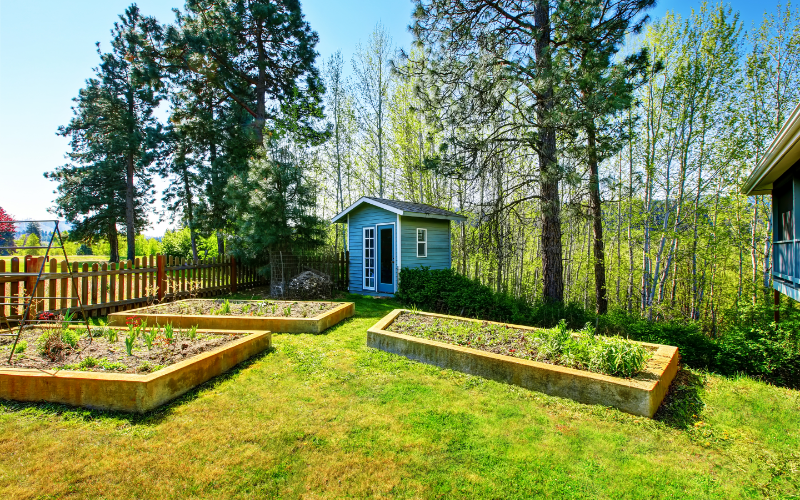
Sure, the summer harvest is just now wrapping up, but it’s not too soon to begin prepping for next year’s planting season.
In fact, the fall and winter months are the perfect time to take care of mini-projects around your home—like building or repairing your raised garden beds.
Raised garden beds are enclosed gardens, usually with wooden borders, in which the soil within the garden unit is raised above the natural soil that the bed sits on.
This is a popular gardening method for many reasons: raised garden beds make growing your own healthy food more accessible and convenient, no matter where you live.
Olin and I have noticed that raised garden beds seem to be all the rage in the western U.S. We are currently on a roadtrip out West, and we’ve seen that many of the communities along Route 66 all have community gardens featuring raised garden beds. It makes sense—amending the dry and rocky soil that’s characteristic of these arid regions would be really difficult!
In this post, we’re breaking down a few of the pros and cons of raised bed gardening. We’re then showing you how to easily make repairs to your existing raised bed garden so that you’ll be ready to go come springtime!
PROS OF RAISED GARDENS:
Grow a garden anywhere.
Raised gardens make gardening possible anywhere, no native soil necessary. That means you can grow peppers on your patio or broccoli on your balcony with only a few simple steps.
Poor soil quality where you live? Raised gardens can be your ticket to tasty tomatoes, without the hassle of amending your in-ground soil. Since you are the one adding soil to your raised garden bed, you’ll be able to give the plants what they love: soil that contains nutrient-rich organic matter, drains well, is free of rocks or clay, and loose for easy root growth.
Start your spring season early.
In a raised garden bed, the soil heats up faster than in-ground gardens. This means you can get a headstart on planting come spring.
Rejoice over less weeds.
Less weeding time? We’ll take it!
With raised garden beds, you have control over the soil, meaning that you can do your due diligence to add in weed-free soil and compost.
Additionally, you can add extra prevention against weeds through “sheet mulching” (also known as lasagna gardening) by adding a bottom layer to your garden that snuffs out weed growth. Read more about lasagna gardening here.
Give your garden a tidy look.
Raised gardens add extra aesthetic appeal by giving your gardens a fresh, clean-line look!
CONS OF RAISED GARDENS:
Show me the money (and time).
While gardening in general requires time and money, a raised garden bed will require a slightly higher upfront investment, since you will need to purchase the lumber and other materials required to build out your bed. Additionally, you may need to purchase soil to add to your raised garden bed.
You’ll need to up your watering game.
Your raised bed will need more watering since the soil dries out quicker than traditional in-ground beds.
Repairs are required.
Your raised bed does require upkeep. Every few years, you’ll need to replace your border entirely. However, your bed’s border should last 6 – 8 years if built from regular lumber, with cedar wood lasting even longer.
REPAIRING YOUR CURRENT RAISED GARDEN BED:
Have a raised garden bed already? The fall months—after the busyness of the summer harvest season has passed—are the best time to take on this project.
By preparing your raised bed now, you also allow plenty of time for soil prep before next spring’s planting season rolls around.
Once your finished bed is in place, you can begin building up your soil. You can purchase soil from your local garden store, use pre-existing soil on your property (though you have less control over weed content), or use the “sheet mulching” (a.k.a. lasagna gardening) method.
Learn how to create nutrient-rich soil from the lasagna garden method here.
Tools & materials you’ll need for this project:
- Shovel
- Rake
- Hammer
- Nails
- Angle Brackets
- Lumber for frames
- Drill
- Screws
Buy prefab:
Prefab raised beds are also available from stores like Lowes and Home Depot.

